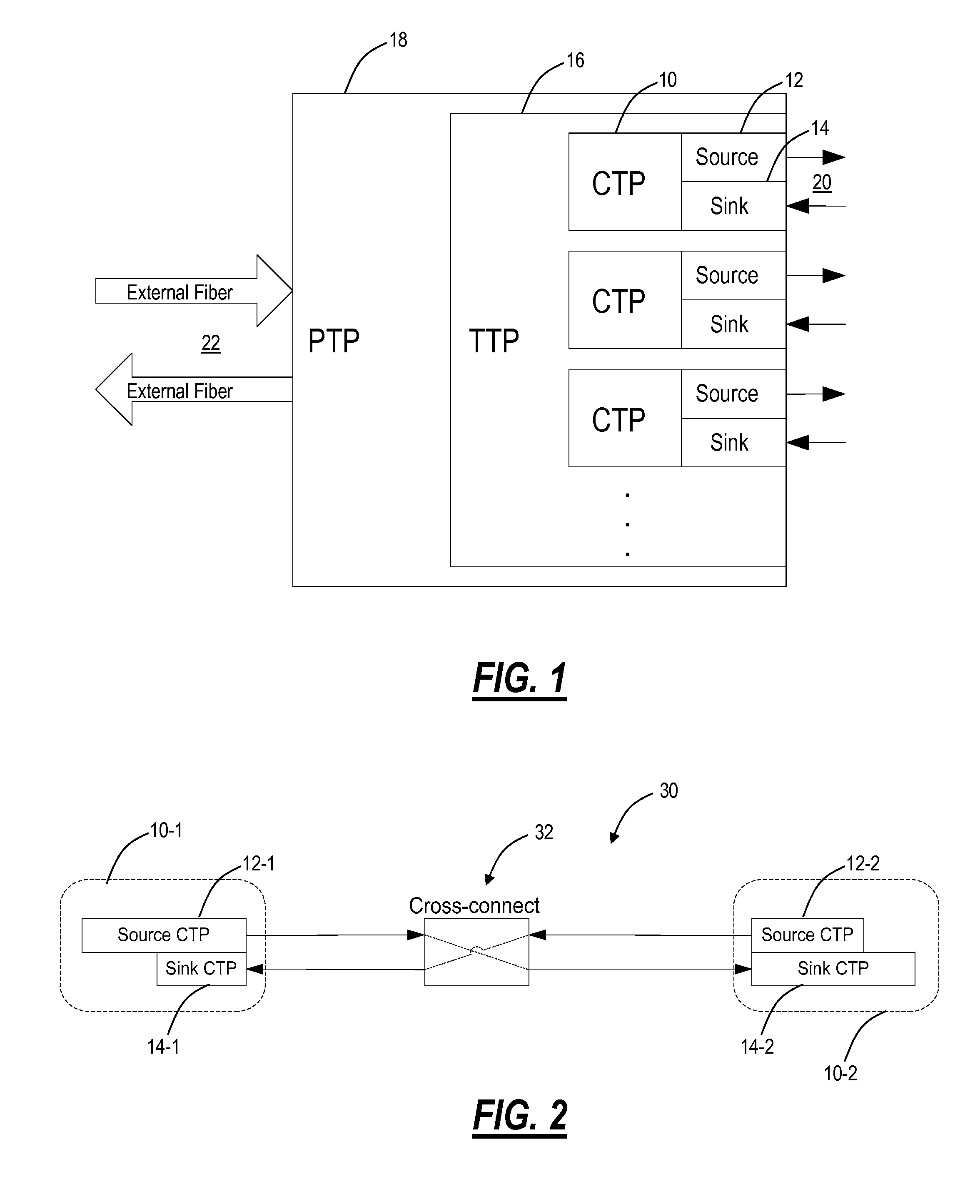Unidirectional asymmetric traffic pattern systems and methods in switch matrices
a traffic pattern and switch matrix technology, applied in the field of communication networks, can solve the problems of fragmentation and/or loss of bandwidth, automatic unusability of other directions, and inability to merge these connections into one manageable connection,
- Summary
- Abstract
- Description
- Claims
- Application Information
AI Technical Summary
Benefits of technology
Problems solved by technology
Method used
Image
Examples
Embodiment Construction
[0026]In various exemplary embodiments, the present disclosure relates to unidirectional asymmetric traffic pattern systems and methods in switch matrices, network elements, and networks based thereon. In particular, the systems and methods include switch fabrics, network elements, methods, and networks based thereon using an information model such as ITU-T M.3100 or variants thereof to manage physical connections therein. To address limitations associated with symmetric traffic patterns between transmit and receive directions, the systems and methods include asymmetric traffic patterns in the switch matrices, network elements, and networks based thereon. In particular, the systems and methods include a flexible way for overlapping two different size cross connects and / or FCCs in transmit and receive directions seamlessly. To address limitations associated with merging and splitting traffic patterns, the systems and methods utilize Virtual Connection Point (VCP) merges and splits. F...
PUM
 Login to View More
Login to View More Abstract
Description
Claims
Application Information
 Login to View More
Login to View More - R&D
- Intellectual Property
- Life Sciences
- Materials
- Tech Scout
- Unparalleled Data Quality
- Higher Quality Content
- 60% Fewer Hallucinations
Browse by: Latest US Patents, China's latest patents, Technical Efficacy Thesaurus, Application Domain, Technology Topic, Popular Technical Reports.
© 2025 PatSnap. All rights reserved.Legal|Privacy policy|Modern Slavery Act Transparency Statement|Sitemap|About US| Contact US: help@patsnap.com



